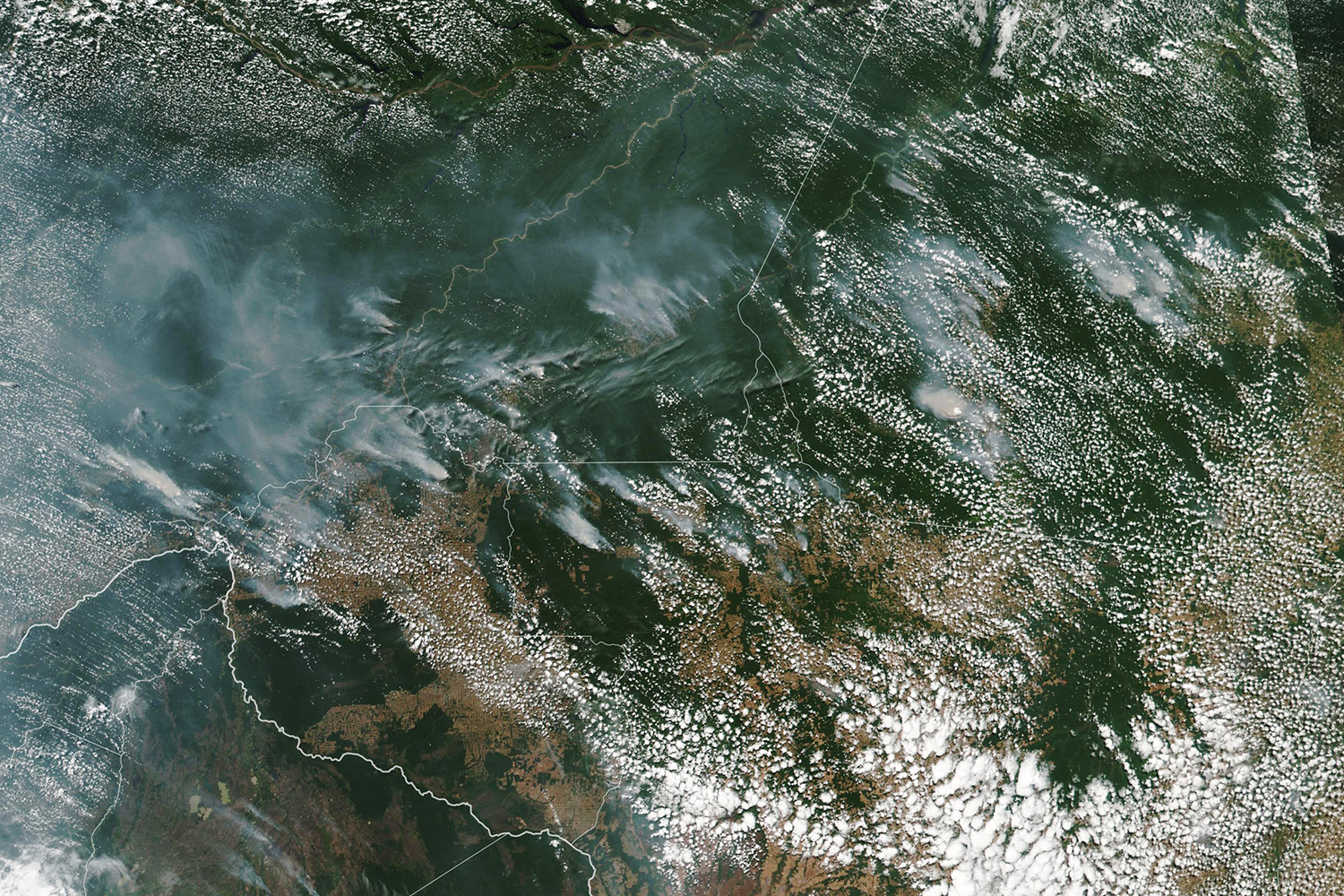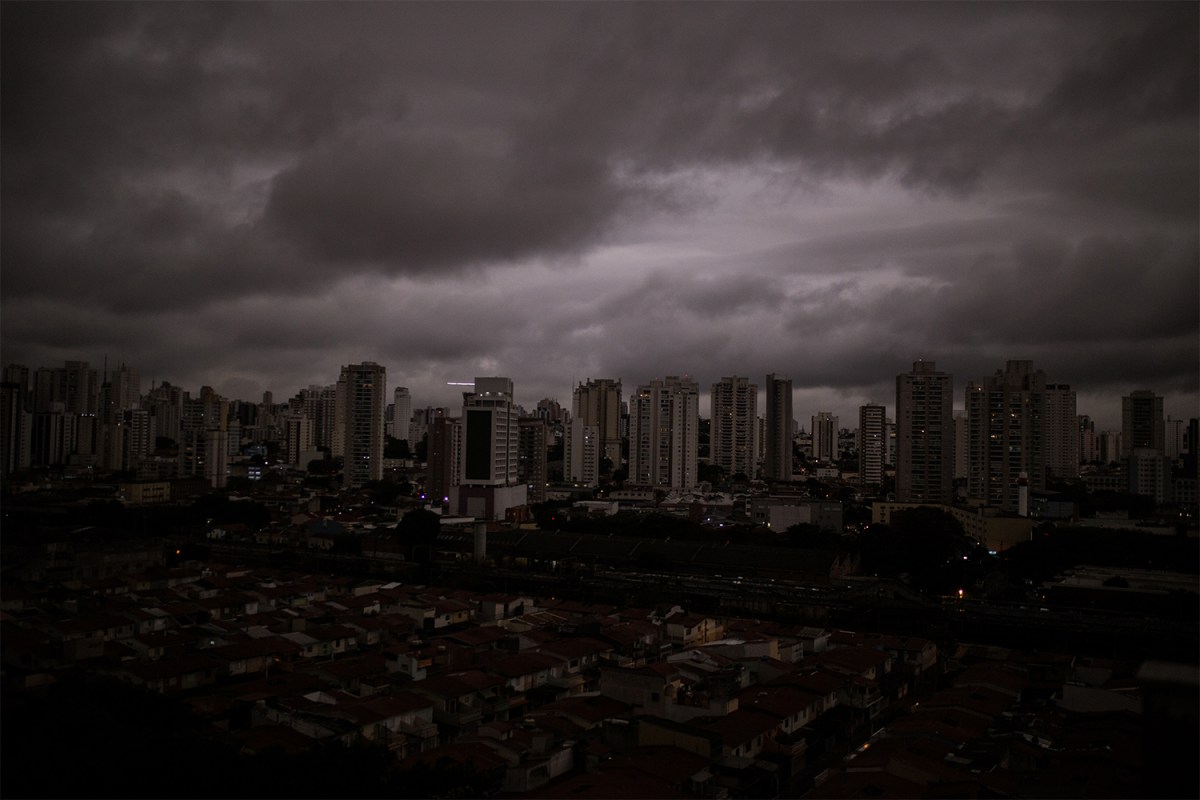On Tuesday morning, Americans opened up Twitter to find the hashtag #SaveAmazonia trending alongside pictures of the Amazon Forest on fire. These were coupled with photos from São Paulo, Brazil, showing the city plunged into smoke-induced darkness in the middle of the day. By Thursday, social media was in full-blown #PrayForTheAmazon phase; one of the most common sentiments has been, if the media could cover the Notre Dame fire nonstop, why weren’t they covering the decimation of “the lungs of the planet”?
The problem — as is the case with many modern issues — is misinformation. Yes, the Amazon rainforest is burning, but it’s likely not what you’ve seen on your screens. We set out to break down the multiple issues, from the viral photos to the potential human causes to what we can all do about it.
The viral photos you’re seeing? They’re old.
Let’s start with the viral tweet above that was sent out on Tuesday, August 20, and has racked up close to 500K retweets at the time of writing.
You’ve most likely seen at least one of these photos on social media this week. The problem? Neither of them are from this year’s forest fires in the Amazon. Snopes fact-checked the images and found that the “image on the left shows a fire from 1989, and the image on the right has been online since at least 2012.” If you feel like you’ve just been duped like Rick Perry and the Instagram hoax, it’s understandable.
Unfortunately, even though some of the images circulating are old, the Amazon really is on fire. As National Geographic cites, the National Institute for Space Research (INPE) released data this week showing there have been 72,843 forest fires in Brazil in 2019 alone, an 80% increase from 2018. But that article goes on to say, “Like the wildfires that plague California, most are started by humans, but then spiral out of control.”
Can we stop the fires by listening to Smokey Bear?
The fact that most of the fires in the Amazon rainforest are caused by humans could lead one to think that we, responsible stewards of the planet, could also stop them from happening. As Smokey Bear says, “Only you can prevent forest fires.” But the larger context, another case of misinformation spreading around this issue, is that these fires aren’t being caused by humans camping, shooting off fireworks or otherwise being reckless. They’re being caused intentionally.
A feature from The Washington Post points to two reasons humans are setting the forest on fire: deforestation and farming (like cattle ranching and soy production). Quartz connected the two issues, writing, “Cattle ranching is responsible for as much as 80% of the ongoing deforestation of the Amazon rainforest.”
So why are we seeing more ranchers setting fires that can get out of control? Quartz cited the reasoning behind that as well: “As Brazilian president Jair Bolsonaro has expressed disdain for conserving the rainforest, his support for industrial growth has reportedly encouraged ranchers and other developers to move more brazenly into undeveloped forest land — much of which is indigenous territory.”
The Bolsonaro effect
This brings us to Bolsonaro, who has been another major contributor to the misinformation. As The New York Times reported, he responded to international criticism over his handling of the fires by saying “there was a ‘very strong’ indication that some non-governmental groups could be setting blazes in retaliation for losing state funds under his administration.” The Times said Bolsonaro “did not provide any evidence.” In plain English, he lied.
This inability of Brazil’s president to take responsibility for the destruction of the rainforest is directly tied to his business-over-environment policies. Continuing on the point Quartz made about development in indigenous territory, the Times cites Kumi Naidoo, secretary general of Amnesty International, who said they’ve “documented illegal land invasions and arson attack near indigenous territories in the Amazon, including Rondonia state, where many fires are raging.”

So is the Amazon burning to the ground or not?
Many outlets covering the Amazon fires are citing NASA and the organization’s satellite imagery. For example, Forbes mentioned a press release containing the aforementioned INPE data (about the 73K fires that are over 80% more than in 2018). What they didn’t include in the article is that NASA also said, when looking beyond the last two years alone, the fires in the Amazon have actually been average:
As of August 16, 2019, an analysis of NASA satellite data indicated that total fire activity across the Amazon basin this year has been close to the average in comparison to the past 15 years. (The Amazon spreads across Brazil, Peru, Colombia, and parts of other countries.) Though activity appears to be above average in the states of Amazonas and Rondônia, it has so far appeared below average in Mato Grosso and Pará, according to estimates from the Global Fire Emissions Database, a research project that compiles and analyzes NASA data.
Does this mean we’re in the clear? That the Amazon is not in crisis mode? Not at all.
Is there anything people can do to help?
The fact that the forest fires are above average in the Amazonas and Rondônia areas show that the claims of illegal deforestation and burning for cattle ranches is indeed occurring. And if we look at Bolsonaro’s record, that destruction will increase under his governance. In fact, as CNN notes, he fired the director of the INPE (again, the organization behind the forest fire data) after “the director had defended satellite data that showed deforestation was 88% higher in June than a year earlier.” So while at the moment forest fires are average, the spiking deforestation will make certain it increases in the future.
Lastly, we circle around to the last big cause of the forest fires: drought. The Washington Post lists it alongside deforestation and cattle ranching as a main cause of the fires, but unlike those, it isn’t directly human caused; it’s indirectly human caused by climate change. As we’ve been told many times, including from a report released by the Trump administration, “continued release of greenhouse gases from cars, factories and other sources will make fires more frequent, including very large fires that burn more than 12,400 acres.”
In short, these Amazon forest fires are not a new phenomenon, they’re merely a continuation of what’s happening on the rest of the planet: a combination of climate change and anti-environmental policies combining to cause massive damage that will only accelerate with time.
We don’t live in Brazil, or other South American countries where the Amazon rainforest resides, so we can’t call up Bolsonaro or the heads of state and say, “I’m your constituent and you need to fix this!” But you can call up your own representatives and ask them to take on issues like climate change and deforestation, because this isn’t just a Brazilian issue or an Amazon rainforest issue. It’s a human issue.
“What’s most troubling, however, isn’t what’s happening now,” writes The Washington Post. “It’s what will happen next. Researchers already say they’ve seen more fires this year than ever before — and the driest part of the year is still ahead.”
This article appeared in an InsideHook newsletter. Sign up for free to get more on travel, wellness, style, drinking, and culture.

























